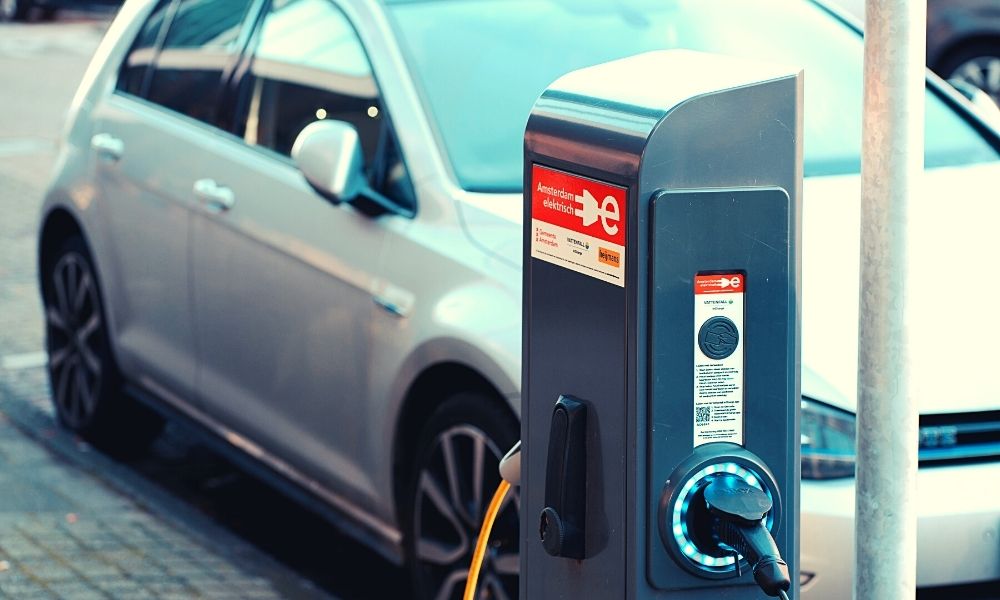
Image Credit: Unsplash
FAME India Scheme: Promoting Electric Mobility And Guiding India To A Sustainable Future
Writer: Anuran Sadhu
A post grad journalism student of SIMC, Pune with a passion for using words to get my message across in the most unique ways possible and curiosity is the force that drives me to learn and experience more every day.
India, 18 July 2021 1:46 PM GMT
Editor : Madhusree Goswami |
A mountain girl trying to make it big in the city. She loves to travel and explore and hence keen on doing on-ground stories. Giving the crux of the matter through her editing skills is her way to pay back the journalism its due credit.
Creatives : Anuran Sadhu
A post grad journalism student of SIMC, Pune with a passion for using words to get my message across in the most unique ways possible and curiosity is the force that drives me to learn and experience more every day.
The Faster Adoption and Manufacturing of Hybrid and EV (FAME) scheme was launched in 2015 to prevent the use of petrol and diesel vehicles as part of the national electric mobility mission plan. In June, In June 2021, the Department of Heavy Industry announced the extension of the FAME-II scheme until March 2024.
India's mission for electric mobility and faster adoption of e-vehicles might have seemed to be a distant dream a decade ago, but the reality today is much more pleasing. With the introduction of Phase II of the FAME India Scheme, India has received its much need boost in ushering the new era of electric vehicles and eco-friendly transportation.
The Faster Adoption and Manufacturing of Hybrid and EV (FAME) scheme was launched in 2015 to prevent the use of petrol and diesel vehicles. The project was an integral part of the national electric mobility mission plan. The Central government launched it with an outlay of ₹8.95 billion, which provided subsidies for electric 2- and 3-wheelers, hybrid and e-cars and buses. The scheme's pilot phase was extended till September of this year or until the second phase is approved.
Extension of Phase II: A significant boost
In June 2021, the Department of Heavy Industry (DHI) announced the extension of the FAME-II scheme until March 2024. The scheme, which was announced on April 1, 2019, was extended by two years, from the earlier closure of March 31, 2022, to March 31, 2024.
The FAME-II has budgetary support of ₹10,000 crore, which is to be used for upfront incentives for purchasing electric vehicles (EVs) and supporting the deployment of charging infrastructure. The former Heavy Industries and Public Enterprises Minister Prakash Javedekar had said that the second phase focuses on supporting electrification of public and shared transportation. It aims to promote 7090 e-buses, 5 lakh e-three- wheelers, 55000 e-four- wheeler passenger cars and 10 lakh e-two- wheelers through subsidies. In what is seen as a boon to two-wheeler electric vehicles, the scheme increased incentive electric two-wheelers by 50 per cent to ₹15,000 per KWh, originally at ₹10,000 per KWh for all e-vehicles, including plug-in hybrids and strong hybrids, except buses. The DHI also increased the maximum cap of incentives from 20 per cent to 40 per cent.
Increasing Acceptance Of EVs
In the wake of India's vision to attain carbon neutrality and the sustainable development goal, the EV industry is gaining momentum, and the demand for e-vehicles has also seen a sharp rise in recent times. According to The Weather Channel, RattanIndia Enterprises and Revolt Motors sold a whopping ₹ 50 crore worth of their flagship model RV400 within two hours of a flash sale held in June this year. RV400 is a homegrown electric two-wheeler currently available in six cities, including Delhi, Mumbai, Pune, Chennai, Ahmedabad and Hyderabad. With the Delhi Government's incentives on electric vehicles, the bike is currently priced lower than ₹1 lakh in the capital city. Ola Electric on July 17 said it has received around 1 lakh bookings for its upcoming scooter within the first 24 hours of initiating the process. The company had opened booking for its electric scooter in the evening of July 15.
On June 5, the World Environment Day, the National Hydroelectric Power Corporation signed an e-mobility agreement with Convergence Energy Services Limited (CESL). NHPC now have the biggest EV fleet amongst Central Public Sector Enterprises (CPSEs) in India with 25 e-vehicles.
Sale Of E-vehicles Under FAME India Scheme
Although the government had allocated a massive budget of ₹10,000 crore in 2019, 5 per cent of the budget has been utilized due to the pandemic, which amounts to ₹500 crore. However, the government has managed to sell 78,045 e-vehicles under this scheme until June 26, which includes 59,984 electric two-wheelers, 16,499 electric three-wheelers and 1,562 electric four-wheelers. Karnataka registered the highest sale with 17,438 e-vehicles, followed by Tamil Nadu with 11,902, Maharashtra with 8,814, Uttar Pradesh with 5,670, Rajasthan with 5,562 and Delhi with 5,632 EVs.
A Step Towards A Sustainable Future
India is slowly marching towards a sustainable and inclusive development agenda, which aligns with the country's strong commitment to achieving globally negotiated Sustainable Development Goals (SDGs). "India is well on track to achieve its Paris agreement targets well before the target date of 2030," Prime Minister Narendra Modi said in March this year, while accepting the 2021 CERAWeek Global Energy & Environment Leadership Award. India has voluntarily committed to reducing greenhouse gas (GHG) emission intensity of its GDP by 33-35 per cent below 2005 levels by 2030, of which 21 per cent has already been achieved.
Impact In Delhi
In February of this year, electric vehicles in Delhi completed two crore kilometres, reported Financial Express. This resulted in a reduction of 500 kg of particulate matter emissions. About 3,573-tonne carbon emission was claimed to have been avoided due to the introduction of EVs. The deployment of electric vehicles in the city also saved ₹8.6 crore in terms of monetary value, and 2-crore km of e-vehicle travel resulted in 13.3 lakh litres of fuel-saving in Delhi. A total of 3,558 tonnes of greenhouse gas emissions was reduced, which is equivalent to the planting of 1.70 lakh full-grown trees.
According to the Government of India, 70 per cent of all commercial cars, 30 per cent of private vehicles, 40 per cent of buses, and 80 per cent of two-wheelers (2W) and three-wheelers (3W) sales would be electric by 2030.
The government is strongly pushing towards clean mobility, and electric vehicles are seen as a ray of hope for a more sustainable future. The FAME India scheme is likely to help the country immensely in reducing dependence on fossil fuels, reduce pollution, improve community health and safeguard energy security.
Also Read: Centre Sanctions 670 Electric Buses, 241 Charging Stations Under Scheme To Boost Clean Mobility
 All section
All section














